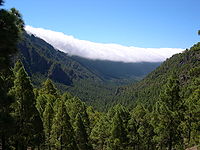
Photo from wikipedia
Stock assessment models are fitted to abundance-index, fishery catch, and age–length–sex composition data that are estimated from survey and fishery records. Research has developed spatiotemporal methods to estimate abundance indices,… Click to show full abstract
Stock assessment models are fitted to abundance-index, fishery catch, and age–length–sex composition data that are estimated from survey and fishery records. Research has developed spatiotemporal methods to estimate abundance indices, but there is little research regarding model-based methods to generate age–length–sex composition data. We demonstrate a spatiotemporal approach to generate composition data and a multinomial sample size that approximates the estimated imprecision. A simulation experiment comparing spatiotemporal and design-based methods demonstrates a 32% increase in input sample size for the spatiotemporal estimator. A Stock Synthesis assessment used to manage lingcod (Ophiodon elongatus) in the California Current also shows a 17% increase in sample size and better model fit using the spatiotemporal estimator, resulting in smaller standard errors when estimating spawning biomass. We conclude that spatiotemporal approaches are feasible for estimating both abundance-index and compositional data, thereby providing a unified approach for generating inputs for stock assessments. We hypothesize that spatiotemporal methods will improve statistical efficiency for composition data in many stock assessments and recommend that future research explore the impact of including additional habitat or sampling covariates.
Journal Title: Canadian Journal of Fisheries and Aquatic Sciences
Year Published: 2019
Link to full text (if available)
Share on Social Media: Sign Up to like & get
recommendations!